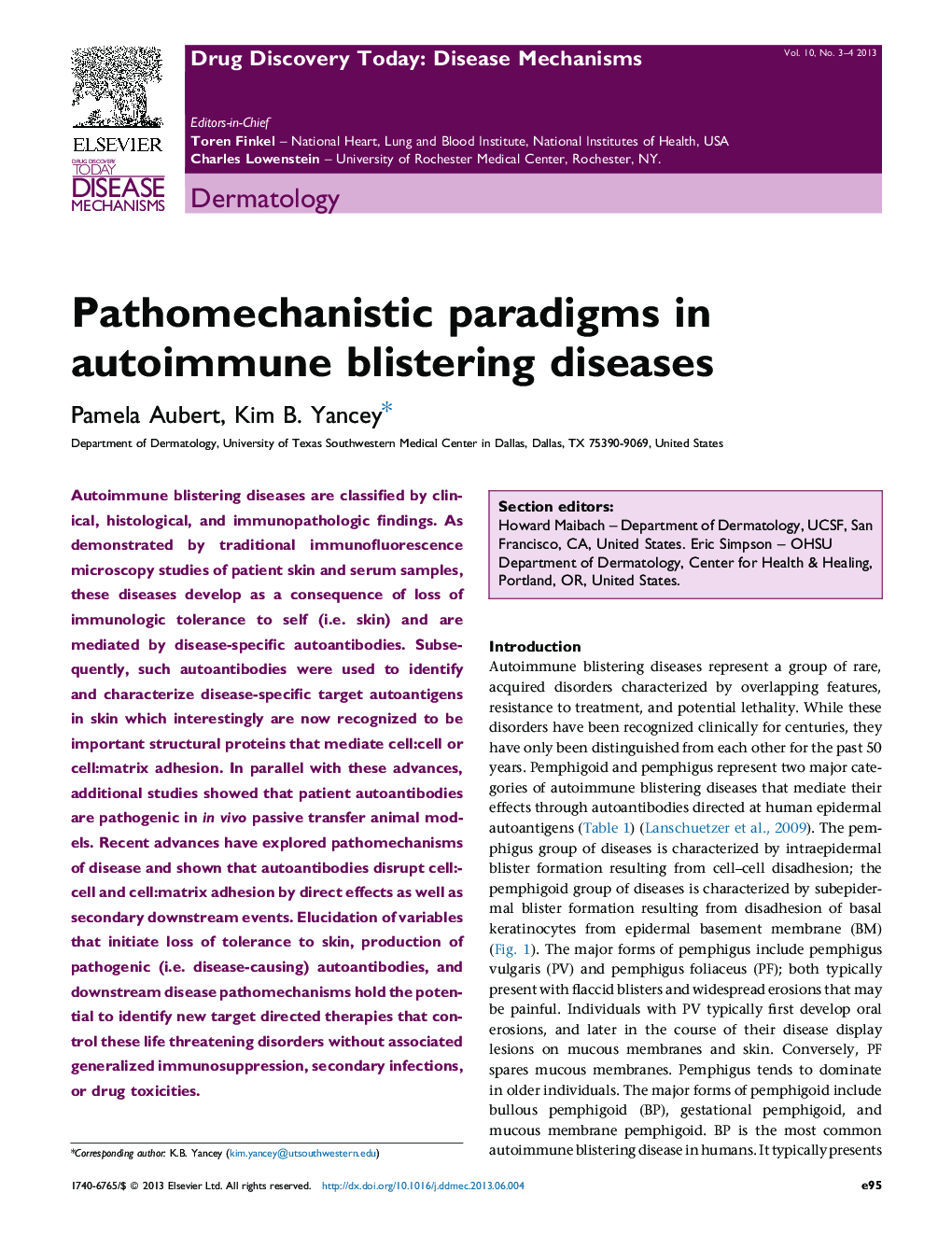| Article ID | Journal | Published Year | Pages | File Type |
|---|---|---|---|---|
| 2081710 | Drug Discovery Today: Disease Mechanisms | 2013 | 6 Pages |
•Patients with autoimmune blistering diseases are classified by the reactivity and specificity of their skin-specific autoantibodies.•Autoantibodies in patients with pemphigus and bullous pemphigoid are pathogenic.•Autoantibodies from patients with pemphigus and pemphigoid elicit immediate and secondary events that cause loss of cell:cell and cell:matrix adhesion, respectively.
Autoimmune blistering diseases are classified by clinical, histological, and immunopathologic findings. As demonstrated by traditional immunofluorescence microscopy studies of patient skin and serum samples, these diseases develop as a consequence of loss of immunologic tolerance to self (i.e. skin) and are mediated by disease-specific autoantibodies. Subsequently, such autoantibodies were used to identify and characterize disease-specific target autoantigens in skin which interestingly are now recognized to be important structural proteins that mediate cell:cell or cell:matrix adhesion. In parallel with these advances, additional studies showed that patient autoantibodies are pathogenic in in vivo passive transfer animal models. Recent advances have explored pathomechanisms of disease and shown that autoantibodies disrupt cell:cell and cell:matrix adhesion by direct effects as well as secondary downstream events. Elucidation of variables that initiate loss of tolerance to skin, production of pathogenic (i.e. disease-causing) autoantibodies, and downstream disease pathomechanisms hold the potential to identify new target directed therapies that control these life threatening disorders without associated generalized immunosuppression, secondary infections, or drug toxicities.
